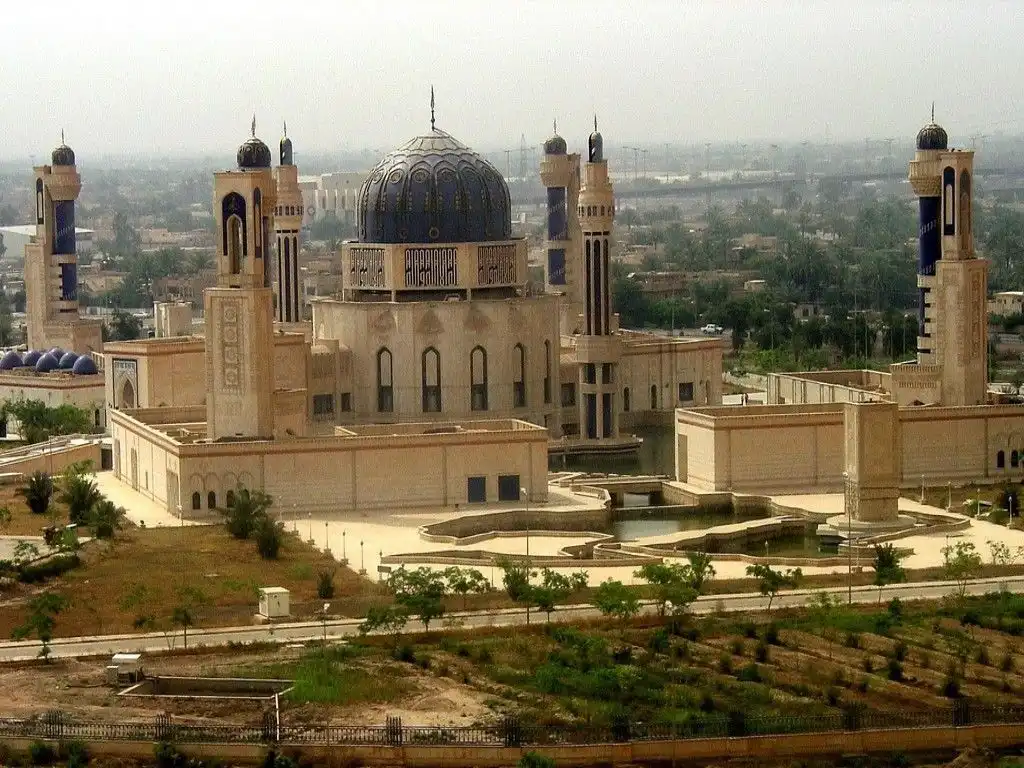
3 Days Itinerary in Sab‘ al Būr, Iraq - Travel Guide
3-Day Spectacular Sojourn in Sab‘ al Būr, Iraq
| Days | Description |
|---|---|
| 1 | Day 1 - Magical Discovery of Local Life |
| 2 | Day 2 - Historical Journey through Sab‘ al Būr |
| 3 | Day 3 - Incredible Outdoor Exploration |
Introduction
Absorb the undiscovered beauty of the Middle East with this comprehensive three-day itinerary focused on Sab‘ al Būr. Experience the authentic lifestyle, culture, and traditions of its local community while also visiting the remarkable landmarks tucked in its every nook and corner.
Day 1 - Magical Discovery of Local Life
Kickstart your Iraqi escapade with Sab‘ al Būr's local attractions. Start your morning with the smell of fresh-baked kleicha—a traditional Iraqi pastry—at the local bakery. Don't miss to observe the making process, it's like attending a personalized cooking class! Next, bask in the charm of local households that enjoy a fine blend of traditional and modern architecture—an aspect that beautifully highlights Iraq's evolving culture. After lunch, visit the bustling Al-Mutanabbi Street, a paradise for book lovers. Can you believe that this street has been Baghdad's literary hub since the Abbasid era? In the evening, relish a traditional Iraqi meal at a local restaurant. Try masgouf, Iraq's national dish, a delightfully seasoned barbecue fish. Post-dinner, enjoy a breezy walk along the Tigres River, soaking in the serenity of Sab‘ al Būr.
Day 2 - Historical Journey through Sab‘ al Būr
Day two unfolds Sab‘ al Būr's historical treasures. After breakfast, head to the iconic AL–Shaab Stadium, a place that is more than just a sports arena. Opened in 1966, the stadium stands testimony to Iraq's evolving sports culture. Nostalgia alert—you're walking on the same ground where some epic football matches have been played! After lunch, visit the Mustansiriya School, one of the oldest universities worldwide—a journey back to the Islamic Golden Age. Can you imagine being a student in the 13th Century? Late afternoon, visit the beautiful Al-Shaheed Monument, a symbol of Iraq's resilience and strength. Cap off the day with a traditional Iraq tea at a local Chai Khana. Be ready for an amusing tea tasting—it’s not just about the variety but the unique preparations as well!
Day 3 - Incredible Outdoor Exploration
The final day is reserved for exploring the stunning natural beauty tucked in Sab‘ al Būr. After breakfast, take a boat ride along the Tigris River. Quite a Hollywood moment, right? Only this time, you are the protagonist! After soaking in the panorama, head for a picnic to one of the local parks—picture perfect settings with the greens, the blues, and the authentic Iraqi food. Next, visit an agricultural farm to learn about Iraq's farming techniques—quite an earthy experience, right? As the sun begins to set, head to the Kadhimain shrine, an architectural marvel dedicated to the 7th and 9th Imams. Finish your day that started with a Hollywood moment and ends on a spiritual note—with a quiet dinner by your hotel. A fitting culmination to a splendid Iraqi adventure at Sab‘ al Būr.

Joseph Mitchell
FAQs about this
3 day itinerary in
Sab‘ al Būr
The best time to visit Sab‘ al Būr, Iraq, is during the spring months between March and May when the temperature is moderate and the landscape is in full bloom.
Don't miss out on trying traditional dishes like kleicha, masgouf, biryani, and dolma. Savoring a cup of strong, sweet tea at a local teahouse, or Chai Khana, is also a must.
The primary language spoken in Sab‘ al Būr, Iraq is Arabic. However, you'll also find people speaking in Kurdish, Turkmen, and Assyrian.
Other city itineraries in Iraq
- An Najaf
- Al Miqdādīyah
- At Tājī
- Khānaqīn
- Al Fallūjah
- ‘Aqrah
- Dahūk
- Az Zubayr
- Mosul
- Rāniyah
- As Samāwah
- Abī al Khaşīb
- Sāmarrā’
- An Nāşirīyah
- Al Ḩamzah
- Al ‘Amārah
- Kirkuk
- Sab‘ al Būr
- Al Qurnah
- Kalār
- Ba‘qūbah
- Ash Shāmīyah
- Al Kūt
- Erbil
- Baghdad
- Karbalā’
- Abū Ghurayb
- Al Başrah
- As Sulaymānīyah
- Ar Ramādī
- Ad Dīwānīyah
- Zākhū
- Al Ḩillah
- Ash Shaţrah
- Al Kūfah
